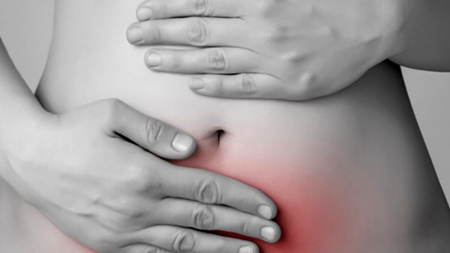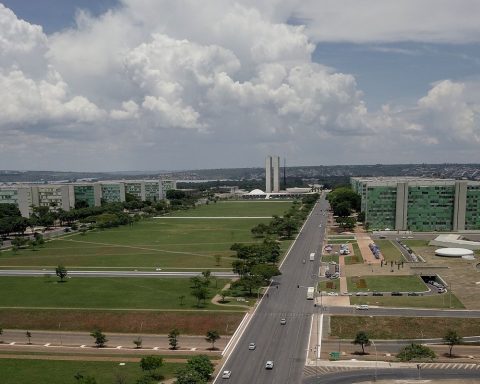Menstruating people diagnosed with endometriosis live in a state of “desperation” due to the pain caused by the establishment of endometrial tissue outside the uteruswhile considering that “menstrual pain is naturalized by patriarchal mandate”within the framework of the world day of this disease that is commemorated this Tuesday.
“The uterus has an endometrial layer that grows and awaits pregnancy, if a pregnancy is not carried out, it falls in the form of menstruation. Now, if there are parts of the endometrium in the abdomen where they should not be, they will bleed and from that they are generated symptoms, such as pain when urinating, diarrhea, ovarian pain, pain when having sex, heavy bleeding,” Mercedes Fiuza, a gynecologist and obstetrician and member of the Argentine Endometriosis Society (SAE), explained to Télam.
The creator of the campaign on social networks “That it hurts is not normal” stated that “menstrual pain is a totally underestimated symptom” where “that they say that it is going to happen is part of sexist violence”, and that if “this pain makes you stay at home, feel contractions, incapacitate you and have to take high doses of medication, it is not pain.” expected'”.
Endometriosis in first person
Rocío Llano (37) lives in Pilar, in the north of the province of Buenos Aires, she is a surgical instrumentalist, maternal and child assistant and works as a childcare provider.
“My periods were very painful to the point that my legs fell asleep and I collapsed on the school floor. As an adult, I ended up in the guard every month to be given painkillers”told Télam the woman who was diagnosed at the age of 32.
“I had hemorrhages, my waist, head, stomach and intestine ached, it felt like a contraction. My menstrual pain did not let me do anything, and the response from the professionals was ‘your studies are normal, your period hurts’ and they suggested I drink something to anticipate the pain,” he said.
At the age of 20, after having losses outside the menstrual cycle, they removed a cyst on her ovary, however, it was not diagnosed.
“They prescribed me contraceptives but then I had to stop. I was already desperate, I had to stay in bed and I had to miss work, school or any type of activity many times. It’s maddening to feel that pain, it’s maddening,” she revived.
“Because of the bleeding, it has happened to me to get to work all stained and have to ask my colleagues to find clothes for me to change,” she recalled.
Thus, Llano expressed having gone through days of “anguish” until he finally underwent a laparoscopy.
“My diagnosis was grade four infiltrating endometriosis, in which foci were found in the intestine and bladder, plus the uterus was attached to the tubes and that could affect my fertility,” he explained.
“They gave me a medication that does not allow you to ovulate or menstruate, until I wanted to try to get pregnant and the pain returned because endometriosis is estrogen-dependent,” he said.
Llano has undergone three surgical procedures due to the disease, is on an anti-inflammatory diet, and is treating the symptoms with medication until she can start her fertility treatment.
“Endometriosis affects not only the physical, but also the emotional aspect, which is why it is important to find a professional who listens and understands what is happening to each one.and the reproductive desire of those who do not want to be a mother and of those who do, to give them options such as freezing eggs,” he concluded.
A disease that affects 190 million people
According to figures from the World Health Organization (WHO), endometriosis affects an estimated 190 million women and girls of reproductive age worldwide And according to data released by the American Society for Reproductive Medicine (ASRM), 30 to 50% of people with endometriosis may experience infertility.
Regarding the identification of the disease, Fiuza commented that it is diagnosed by the clinical part with the manifestation of symptoms and how it responds to treatment; by abdominal and transvaginal ultrasoundor contrast resonance, although “it can be difficult, it cannot be seen and not all diagnoses have images that support them.”
The available treatments are hormonal, which slows the progression of the disease, or surgical to remove dissipated endometrial sediments.
(S)Stella Maris Forastieri (46) lives in the Autonomous City of Buenos Aires, is a journalist, radio producer and member of the Argentine Endohermanas Association. Her diagnosis came at the age of 27.
“It was difficult. The disease affected my school life, my classmates found out that I was menstruating because I had to go look for my mother because she couldn’t take the pain anymore and she was bleeding profusely. I was embarrassed because it was not normal to talk about menstruation. Then it affected my social life.”he remembered.
Forastieri said she suffered pain for 16 years and gynecologists told her to take painkillers and told her that “menstrual pain was normal.”
“It is naturalized that women have to have menstruation hurt by patriarchal mandate”sentenced.
“It is naturalized that women have to have menstruation hurt by patriarchal mandate.”
“In recent times I had pain throughout the month in the lower abdomen, pressure in the bladder and abdominal inflammation. I could only lie in the fetal position. They were disabling pains and the contractions I had in my delivery were half as painful as what was causing my endometriosis,” she continued.
Thus, he recalled that one day he could not get out of bed, and after an ultrasound they determined that he had the disease, but the delay in the diagnosis caused an endometriotic cyst to form in the left ovary that ended up tearing, contaminating other organs. .
Years later, she underwent a laparoscopy to remove the sediments so that she could carry out fertility treatment. After being a mother, her uterus was stuck to the sacrum by endometriosis, having to undergo a new surgery.
“They take out my uterus because it was ruined by endometrial tissue and attached to other organs. They left my ovaries, therefore the hormonal function continued, and although the disease continued, because you are not cured, my quality of life improved since I am correctly medicated with hormones and on an anti-inflammatory diet,” he said.
Thus, he alluded to the fact that “you can have discomfort when menstruating, but you have to let yourself continue with your life” and stated that endometriosis must be included in the Mandatory Medical Plan (PMO), as indicated in the bill presented by the national deputy Jimena López (Frente de Todos- Buenos Aires), recognized as a chronic gynecological disease.
March 14 was the date proclaimed by the WHO as International Endometriosis Day with the aim of making visible the reality of menstruating people who go through this disease.


















